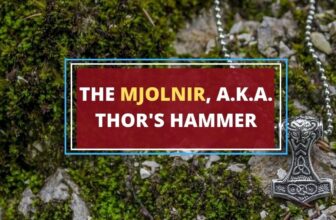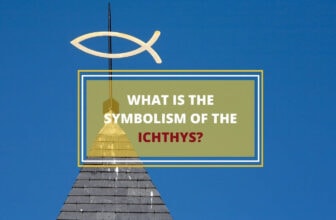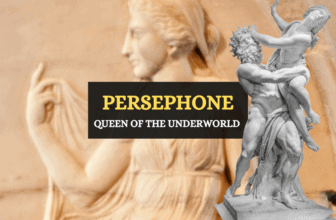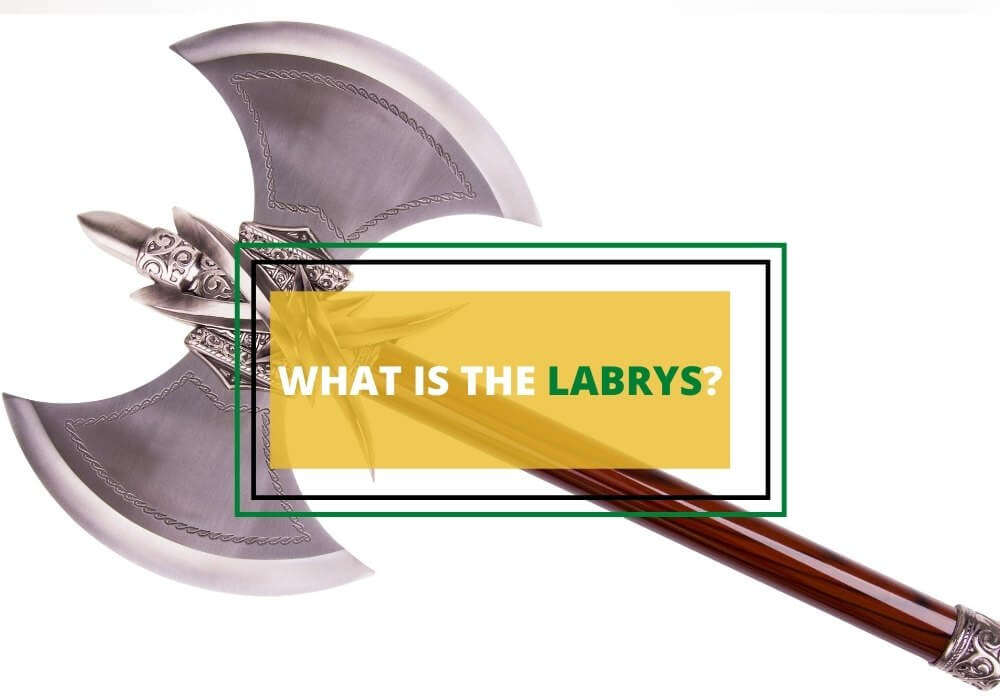
Table of Contents
One of the oldest symbols of Greek civilization, the “labrys” or a double-headed axe has many religious and mythological connotations. The labrys continues to be an influential symbol.
Here’s a look at the origin of the symbol and how it’s made its way into our modern times.
What is the Labrys Symbol?
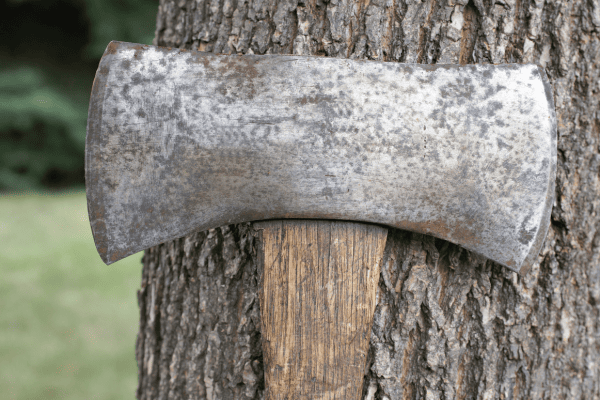
The labrys symbol, a double-headed axe, comes from ancient civilizations, mainly the Minoan civilization in Crete. It’s famous for its connection to the Knossos palace, symbolizing royal power. “Labrys” is a Greek word, and this symbol was common in the Aegean region.
In Minoan and Mycenaean cultures, it was important in religious and ceremonial practices, often linked to the Mother Goddess, representing fertility and female power. Greek mythology connects the labrys to the story of Theseus and the Minotaur, where Theseus used it in the Labyrinth. Over time, different groups have adopted the labrys.
Today, it stands for female empowerment and strength, especially in feminist and lesbian groups. Its symmetrical design also makes it a symbol of balance and unity in various spiritual and philosophical areas. The labrys is more than an old relic; it’s a symbol of power, duality, and resilience that has adapted over time and cultures.
History of the Labrys Symbol
According to Plutarch, a Greek Middle Platonist philosopher, the term “labrys” was a Lydian word for “axe.” In ancient Crete, it was a sacred symbol of the Minoan religion, signifying the authority of female goddesses, the authority of women, and the matriarchy. It has been found widely in the archeological excavations at the Bronze Age Palace of Knossos, and was used by Minoan priestesses for religious sacrifices.
Some believe that the “labrys” is etymologically connected with the word labyrinth. In the context of the myth of Theseus—a Greek hero who slayed the Minotaur—the labyrinth is frequently associated with the Minoan palace of Knossos. But according to Fundamental Symbols: The Universal Language of Sacred Science, it seems “labyrinth” is not directly connected with the double-edged Cretan axe.
In Greek mythology, the labrys often referred to as the “pelekys” is the symbol of Zeus, the ancient Greek god of the heavens, thunder, and lightning and the king of the gods of Mount Olympus.
According to the book The Thunderweapon in Religion and Folklore: A Study in Comparative Archaeology, the double-axes were used as a representation of lightning—and even worshipped as protecting deities during the Mycenaean period around 1600 to 1100 B.C. It is also believed that a stone axe was worn as an amulet because it was regarded as a thunderstone.
In Roman Crete, the symbol was often associated with the Amazons, a tribe of warrior women in Greek mythology who refused to follow the patriarchal culture. There is an ancient mosaic depicting an Amazon warrior with an axe-like weapon in times of war.
The Labrys Symbol in Modern Times
The labrys symbol has undergone various interpretations and appropriations throughout history. During the Greek fascist regime from 1936 to 1941 under Ioannis Metaxas, the labrys indeed became a symbol of authority and power, chosen for its perceived connection to ancient Hellenic civilizations.
However, its use in Vichy France during the 1940s is less documented and recognized, particularly the claim of its appearance on coins, propaganda posters, and Philippe Pétain’s flag. This specific usage requires more historical substantiation.
In contemporary times, the labrys has found positive representation in various movements. It symbolizes modern pagan groups, particularly those practicing Hellenic polytheism, which honors the deities of ancient Greece.
The labrys also holds significant meaning in feminist and lesbian communities. During the 1970s, it was embraced by Anglo-American lesbian feminist subcultures as an icon, symbolizing strength and empowerment.
This association draws upon the historical connection between Amazons and lesbians. In 1999, the labrys was indeed featured on a version of the lesbian flag, depicted as a white labrys on an inverted black triangle against a purple background, symbolizing lesbian identity and solidarity.
Meaning and Symbolism of the Labrys
The labrys, a.k.a. the double-headed axe, has various meanings and connotations, and here are some of them:
1. Ancient Origins and Authority
The labrys, from ancient civilizations like Crete’s Minoan culture, symbolized power and authority. Rulers and gods often used it, showing control and dominance. In places like the Knossos palace, the labrys stood for high status and governance. It was more than a tool; it symbolized the power of those in charge, both in government and religion.
2. Connection with the Mother Goddess
In ancient religions, the labrys linked closely to the Mother Goddess, representing fertility and female power. This reflects the matriarchal nature of some old societies where female deities were important for giving life. The labrys became a symbol of women’s strength, nurturing, and the sacredness of femininity.
3. Balance and Unity
The labrys’ two identical axe heads symbolize balance and unity. It shows that life’s dual aspects, like birth and death or creation and destruction, can coexist. This symbol extends to philosophy and spirituality, representing the balance of opposing forces.
4. Greek Mythology and Heroic Journeys
In Greek mythology, the labrys appears in the story of Theseus and the Minotaur, used to navigate the labyrinth. This links it to complex journeys, overcoming obstacles, and heroism. The labrys represents the tools or skills needed to tackle life’s challenges and find oneself.
5. Modern Feminist and Lesbian Symbolism
Nowadays, feminist and lesbian groups use the labrys as a symbol of empowerment and resistance to male dominance. It stands for reclaiming female strength and celebrating women’s identity and sexuality. The labrys here means solidarity, equality, and empowerment, especially for women and marginalized genders.
6. Versatility and Continued Relevance
The labrys remains appealing because it’s versatile across cultures and times. It still represents a range of ideas, from authority and power to balance and empowerment. The labrys adapts its meaning while keeping its deep symbolism, staying relevant in various cultural, religious, and social settings.
Labrys Symbol in Jewelry and Fashion
The labrys symbol, rooted in history and culture, has carved its place in jewelry and fashion. In jewelry, designers craft the double-headed axe into various styles, like detailed pendants and striking rings. They often mix the labrys with precious metals and gems, blending its ancient allure with modern style.
Wearing labrys jewelry isn’t just about fashion; it symbolizes strength, empowerment, and ancient civilizations’ rich legacy, especially resonating with those valuing its link to matriarchal societies and women’s power.
In fashion, designers incorporate the labrys into different designs, from subtle patterns on fabric to bold elements on accessories like belts and scarves. They use the labrys to symbolize balance, unity, and resilience. Its presence in clothing mixes respect for history with a modern twist, attracting those who love style with a story.
Wrapping Up
The labrys has a long history, but it gained popularity in the Greek and Roman Periods when it was considered a sacred weapon of Zeus. Nowadays, it remains significant as a symbol of empowerment, courage, and protection, especially for women.







